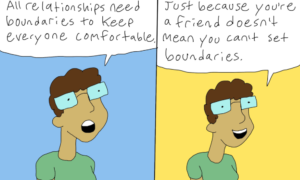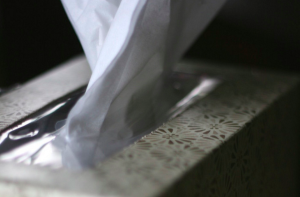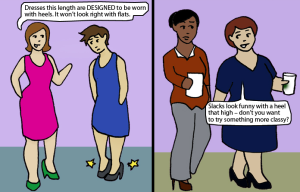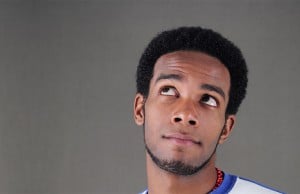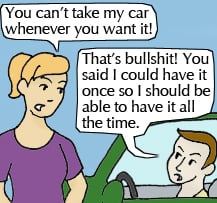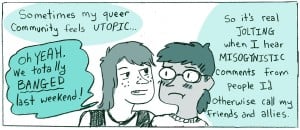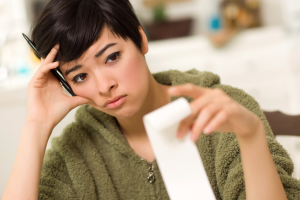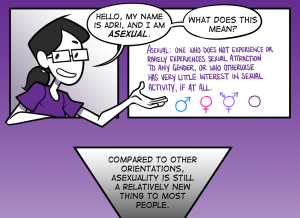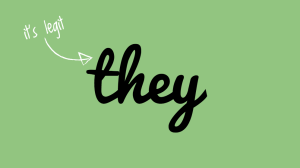
Person sitting at computer with head in their hands.
During what has felt like a year-long public upheaval about healthcare legislation, being on social media has really drained my energy.
I’m disabled, so decisions about healthcare affect me and my community personally, and there are a lot of ableist comments online whenever the topic is brought up.
Lately, I’ve felt like stepping back completely from social media, but it’s not as easy as some people think to just drop it.
Should I deactivate or delete all my accounts and stop using them? This is hard, particularly if you use it as a primary or secondary form of networking, social connection, or employment. It left me wondering: Where do I go from here?
In today’s social and political climate, it feels necessary to be online at all times. What if you miss important breaking news? With 62% of users getting most of their news from social media, it can feel like a lifeline to staying informed.
But social media use can feel inescapable even as it can contribute to our mental and physical health. You can also find yourself feeling exhausted by it.
Whether it’s the fact that you’re using it too much or that what you’re seeing online is overly negative, just face it: you may need a social media break.
It’s totally possible to set reasonable, realistic social media boundaries for yourself and stick to them so you can use the platforms effectively for personal, professional, and activism activities (and so you don’t completely burn yourself out). Here’s how:
1. Set time limits for yourself.
When you know you can’t just hit the delete button, temporarily or permanently, it helps to give yourself reasonable limits that you can stick to.
Many people use social media as a form of connection, and know that they’ll miss out on much-needed online support systems that they’ve built, whether it’s because they don’t have many friends in real life or because it’s physically or financially difficult to make plans in person.
Some of us have to use social media in our jobs, and even if we’re on the clock, scrolling through Instagram for work-related inspiration can lead to a depressing political news spiral.
I know that I can’t deactivate my Facebook, but I can limit myself: I’ll only work on social media-related tasks for work for two hours today, and I’ll only use it for personal reasons for one hour.
It’s important to set realistic boundaries when you’re starting out, and not get too frustrated with yourself if you have a hard time sticking to them.
We’re often more used to checking on platforms than we realize, so it might feel unnatural to put your devices away and specify, “This isn’t social media time.”
I started by setting limits that I thought were achievable: I would dedicate two hours specifically to reading a book or watching a movie, and I’d leave my phone in another room to break the habit of checking it.
If that was working for me, I’d try going an entire day without using social media — which is easier if you make purposeful plans for that day, so that’s what I did by keeping myself busy.
One place I find myself jumping back into social media out of habit is during my commutes by train, so I’ve committed to bringing a book with me so I can dive into that instead.
2. Ask members of your community to support the goal, at least when you’re together.
Have you ever been sitting across from a friend at a restaurant, telling them about something that’s going on in your life, only to realize they’re reading a text message? Me too.
It’s frustrating, and it becomes even more difficult when you’re dedicating yourself to a social media break.
We can’t make the people around us live by our rules, but it might be worth asking friends, family, and anyone in your community to at least take small social media breaks with you.
When you’re hanging out together, you can set realistic boundaries, like allowing social media use only to post photos and look up restaurants or information about your plans, but no aimless scrolling or “just checking in.”
If I know it’ll be particularly difficult for my friends and me to keep our hands off our screens (like it was right after the election last November), I might even say we should all put our phones in the center of the table or in a bowl so the temptation is removed entirely.
Our social media habits can wear off on people when we’re together, which is why it’s helpful if we’re all willing to take a short break together rather than one person being tempting when they see a friend checking Instagram in line.
I’ve noticed that my bad social media habits have rubbed off on my partner — like my tendency to check my phone in bed before I get up, or get distracted by something online when I’m supposed to be cooking dinner.
But if we’re both committed to being social media-free for an afternoon, then it’s easier to watch our own habits because it’s not just an individual effort.
And telling your community that you won’t be checking social media as often can be helpful, because then they’ll know to share news or cute photos with you one-on-one, or that you’d prefer funny articles sent to you via text message instead of tagged on Facebook.
3. Check in with your community on and offline, and ask them to do the same.
Social media can be particularly heavy to navigate when something upsetting is happening, whether it’s a political decision, a natural disaster, or a hate crime aimed at your marginalized group.
After the Pulse shooting in Orlando, I felt like I really needed to get away from social media because I was tired of seeing non-LGBTQ+ people dismissing the real violence and queer and trans antagonism that LGBTQ+ people face.
The same thing happened to me recently with constant news about Hurricane Irma, because I have several friends and family members living in Florida.
I’m not naturally an anxious person, but between constant updates about potential destruction and chain Facebook statuses praying for people who might not survive the disaster, being on social media was actually making me quite nervous.
I remembered I should check in with my community — not just my friends and family who were potentially going to be affected by Hurricane Irma, but also anyone else who has people they care about in the hurricane’s path.
As it turns out, one of my close friends was just as worried about her best friend and her aunt, and we were able to talk to each other about how upsetting the constant flurry of news activity was.
4. Look for alternate sources to replace social media.
This isn’t always possible, but any small way you can cut back or offer yourself another opportunity might be helpful.
Or if you feel more affected by one social platform over another, you might look into how you can make the most out of channels don’t that negatively impact you.
Sometimes I’ll go directly to news sources and websites to learn about something that’s going on or to see if anything has happened that I’ve missed.
If I know digging deeply might still upset me, I’ll just scan headlines so I can think about what I might want to skim and what I might want to become more informed about.
This can also look like replacements for social media as a method of connection or as a tool for job opportunities.
As someone who freelances on the side of their day job, I definitely rely on social media as a tool to find out about publishers that are looking for writers and editors, and to network with other publishing professionals.
But when I’m feeling really burnt out, I look outside social media — or limit myself to thirty minutes of professional use a day or less — so I’m not exhausting myself.
It’s especially hard if you’re marginalized in some way, like if you’re disabled or low income, but it can also be useful to seek social connection outside of social media platforms.
Even if it just means moving to another website because getting together with folks in person isn’t an option, you might think about social media platforms that seem less toxic or finding a forum you’ve never tried, reading someone’s blog, or watching your favorite YouTuber’s channel.
5. Create a purposeful self-care plan.
Self-care means different things to everyone. For me, it often looks like writing in my journal, listening to music, taking a walk, getting some tasks done around the house, petting my cats, reading a book, or catching up with a friend.
Whatever self-care works for you, it helps if you have a plan in place before a crisis hits.
As a queer, disabled writer, I occasionally run into hateful comments, abuse, and trolling of my work and my personhood on social media, particularly when it comes to my work in feminism and social justice.
But I have a plan in place for when that happens, including talking to a few trusted friends who also do similar work and have been through the same thing and asking people I trust to take a look at my social media accounts for me.
They can verify whether or not the comments are abusive or a legitimate — if painful — critique of my work, and can help me sort through and block people accordingly.
They can also stick around to remind me that even if there is criticism, I can look at it as a growth point instead of an attack on me as a person.
It’s not always possible to plan ahead because we can’t know in advance if someone will attack us online or spread content that’s harmful or upsetting.
It happens frequently, especially to marginalized people whose trauma is often all over the news—and subsequently, social newsfeeds.
That’s why I try to keep different self-care tactics in mind, and when in doubt, I ask my community for new suggestions if my go-to technique isn’t working.
[do_widget id=’text-101′]
Alaina Leary is an Everyday Feminism Reporting Fellow. She is a Bostonian currently studying for her MA in publishing at Emerson College. She’s a disabled, queer activist and is on the social media team at We Need Diverse Books. She can often be found re-reading her favorite books and covering everything in glitter. You can find her at her website or on Instagram and Twitter @alainaskeys. Read her articles here.
Search our 3000+ articles!
Read our articles about:
Our online racial justice training
Used by hundreds of universities, non-profits, and businesses.
Click to learn more





